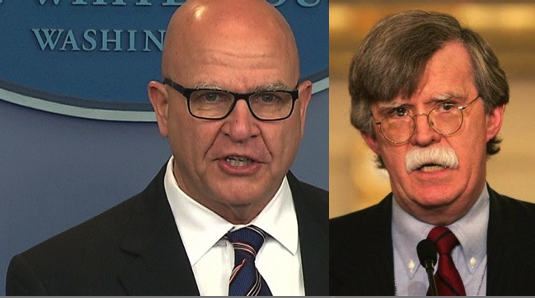

“Several significant decisions taken in recent months by the NDA government at the Centre were a clear indication that transfer of Chandigarh to Punjab was nowhere under its consideration. Intriguingly, on eve of the Punjab Assembly elections in February, speculations were afloat that the Prime Minister Narendra Modi during his pre-election rallies in Punjab may announce transfer of Chandigarh to this border State. For many, writing on the wall was obvious. Changing the structure of the Management of the Bhakra Beas Management Board (BBMB) was an indication of the Centre Government’s thinking. And if that was not enough, the union home minister during his last visit to Chandigarh, announced a major policy decision of bringing Union Territory of Chandigarh employees under the central Civil Service rules thus putting to an end to the continuation of Punjab Civil Service rules.”
On November 1, 1966, when Chandigarh was carved out of Punjab as a Union Territory, Dr MS Randhawa, ICS, was appointed its first Chief Commissioner. Since then, Chandigarh has grown from “a city of greying beards and green hedges” to a throbbing millennial mini-India, while remaining mired in various controversies.
Unlike major Punjab cities, the Union Territory has a large population of migrants from far off places, including Tamil Nadu, Kerala, Uttar Pradesh, Bihar, Uttarakhand, Manipur, Nagaland, and Jharkhand that has assimilated into a multiethnic and multicultural community making it unique in more than one way.
Built as a planned city and capital of Punjab, it has been gradually inching to clinch its own special identity. Supported by the Central Government with lavish funding since 1966 and the unfortunate diminishing interest of parent States of Punjab and Haryana, this adopted territory stands alienated from its motherland.
Developed as a City of Excellence with top of the shelf facilities like open green spaces, wide roads, storm water drainage system, it soon grew to an educational and top-class health care hub with the coming up of institutions. Less than one third of the normal size of a district in Punjab or Haryana, Chandigarh now boasts of institutions that provide world class education in health, engineering, architecture, law, pharmacy, home care and art. It has exclusive sports stadia for cricket, hockey, tennis, football, skating, indoor sports, and water sports. It has one the highest ratio of tennis courts to population, an extremely popular Golf Club, and a golf range besides several swimming pools, including centrally heated pools.
Besides Zakir Hussain Rose Garden, Chandigarh has the distinction of having plant specific gardens, like Bougainvillea Garden, in addition to an exclusive Japanese garden, a topiary park, a bird sanctuary and two Botanical gardens. Sukhna Lake and Rock Garden make it a major tourist attraction.
It does not have much industry but still it is a top production Centre for steel furniture, sanitary fittings, pharmaceuticals, and needles. It had investment from world leaders in pharmacy (Pfizer) and needles (Goetz & Beckett). The Chandigarh Administration in its wisdom decided to put a full stop before further growth of industry and allowed change of land use making room for multiplexes, malls, and hotels to come up in place of existing industrial units like Pfizer.
It is the misfortune of the Union Territory that continuity was a glaring missing link that followed the change of administrative head. Ambitious projects like captive power generation – Chandigarh does not have a source of power generation – building of Nehru Centre for Performing Arts, construction of elevated road from the PGI to the Transport Chowk, flyover over The Tribune inter section, Mass Rapid Transport System, and building of Chandigarh Trade Fair ground on the lines of Pragati Maidan never progressed beyond paperwork. Huge amounts were spent on consultancies and feasibility reports. Money was spent lavishly on holding foundation stone laying ceremonies of Nehru Centre for Performing Arts and the Chandigarh Trade Fair ground, but no one was ever held accountable for these languishing projects. These aspects apart, Chandigarh has always remained a bone of contention between Punjab and Haryana, both claiming their rights over its control. When the 1966 Reorganization Act was implemented, Chandigarh was declared a Union Territory as a stop gap arrangement so that Haryana could build its own new capital. It was to be transferred to Punjab. However, claims and counter claims continued with the Centre playing the role of a clever monkey in a fight between two cats. The Reorganization Act mandated that Union Territory of Chandigarh would be run by employees drawn from Punjab and Haryana in the 60:40 ratio. Since it was a small territory, it had a Chief Commissioner as its administrative head followed by Home Secretary, Finance Secretary, Chief Engineer, Chief Architect, an Inspector-General of Police (of the rank of a Deputy Inspector-General) and a Superintendent of Police. These posts were equitably divided between Punjab and Haryana.
All employees, from top to bottom, used to be drawn from the “partner” states. The system continued to work well till about late 80s and early 90s when on the command of the Centre, the Union Territory of Chandigarh started recruiting people directly by gradually cutting down the share of both Punjab and Haryana. Since the protests from Punjab and Haryana were meek, the move picked pace. A stage was reached when the number of employees on deputation was reduced to almost nothing. Most of the positions, from bottom to top, are now filled with UT cadre employees except for a few top bureaucratic slots like Home Secretary, Finance Secretary and Deputy Commissioner.
Even before the “centralization” of the Chandigarh Administration started, the rehabilitation of migrant workers scheme was given a boost by offering tenements to jhuggi dwellers. Thousands of migrant workers, given these tenements, started making capital out of it as they would sell their dwellings at a huge profit and move back to jhuggis to stake claims for new units in future colonies.
Punjab was caught in a vicious fight against terrorism. It was during this period that the Governor of Punjab was appointed Administrator of Chandigarh and the post of the Chief Commissioner was changed to Adviser to the Administrator. Mr. Krishna Banarji, who was till then Chief Commissioner, became the first Adviser to the Administrator of Chandigarh.
In 1985, when the Rajeev Gandhi- Sant Harchand Singh Longowal agreement was signed, hopes were raised that the decision to transfer Chandigarh to Punjab on January 26, 1986, would finally be implemented. Punjab Government led by then Chief Minister Surjit Singh Barnala drew all plans for the smooth transfer of Chandigarh.
A senior bureaucrat Inderjit Singh Bindra was named Administrator of Chandigarh. Invitations were sent out for the formal ceremony that was to take place as a part of the Republic Day celebrations. However, on the night of January 25, the decision was put on hold. Once again, there was a little hue and cry in Punjab political circles. No sincere or concerted effort was made thereafter to get the Rajeev-Longowal agreement implemented. It was Darshan Singh Pheruman, who led a breakaway group of Shiromani Akali Dal, who started fast unto death to demand immediate merger of Chandigarh with Punjab. His fast continued till his death but nothing moved either the Centre or the then Punjab political leadership. His sacrifice remains unacknowledged by the Punjab government. Several significant decisions taken in recent months by the NDA government at the Centre were a clear indication that transfer of Chandigarh to Punjab was nowhere under its consideration. Intriguingly, on eve of the Punjab Assembly elections in February, speculations were afloat that the Prime Minister Narendra Modi during his pre-election rallies in Punjab may announce transfer of Chandigarh to this border State. For many, writing on the wall was obvious. Changing the structure of the Management of the Bhakra Beas Management Board (BBMB) was an indication of the Centre Government’s thinking. And if that was not enough, the union home minister during his last visit to Chandigarh, announced a major policy decision of bringing Union Territory of Chandigarh employees under the central Civil Service rules thus putting to an end to the continuation of Punjab Civil Service rules. While the decision was overwhelmingly welcomed by employees in general as the retirement age now goes up from 58 to 60 and they also get other benefits, including extended maternity leave for women employees, Punjab units of a couple of political parties, including the ruling Aam Aadmi Party (AAP), have not only assailed the move the NDA government at the Centre but also announced to fight it tooth and nail to save the rights of Punjab.
(The author is a veteran journalist with over three decades of experience covering a wide spectrum of subjects and stories. He has covered Punjab and Sikh affairs for more than three decades besides covering seven Olympics and several major sporting events and hosting TV shows. For more in-depth analysis please visit probingeye.com or follow him on Twitter.com/probingeye. He can be reached at prabhjot416@gmail.com)





Be the first to comment